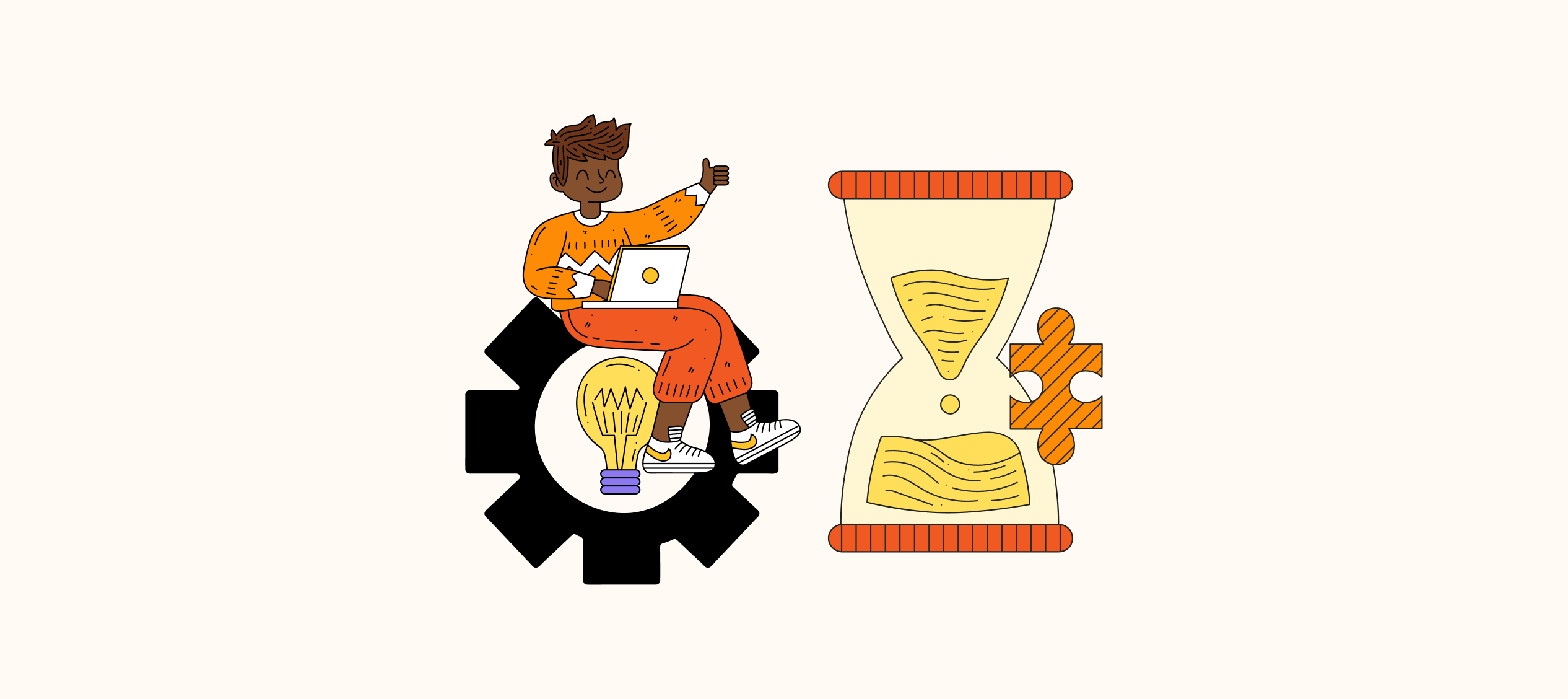Working remotely full-time already demands discipline and when you add a side hustle into the mix, it can quickly feel overwhelming.
Yet across Nigeria and Ghana, more and more remote workers are doing exactly that: holding down full-time jobs while building passion projects or extra income streams on the side. In all, it takes more than just “working harder” to make both sides thrive, and their strategies show that balance isn’t about splitting your hours equally, but about managing your energy, building systems, and protecting your time.
We spoke to Nigerians and Ghanaians in different roles to understand how they keep their full-time jobs on track while still growing their side hustles, and here is what they had to say.
How Are They Balancing a Remote Full-time Role and a Side hustle?
I learned early on that design work demands a lot of focus. If you keep switching between projects, your brain never fully settles. That’s why I treat my full-time job like my biggest and most important client. From 9 a.m. to around 2 p.m., I give them my full attention. No emails from side clients, and no messages about freelance gigs. I work in focused sprints, and I keep a clear list of deliverables for the day.
After lunch, I take a 30–40 minute reset. Sometimes it’s a nap, sometimes a walk, sometimes I just listen to Afrobeats and zone out. Then I switch to my side gigs. The trick for me is batching similar tasks. If I’m already doing UI layouts for my employer, I’ll finish all UI layouts for freelance clients the same day. It’s less stressful than jumping from interface design to branding to motion graphics. Balance is about mental efficiency, not equal hours.
Promise, Product Designer, Nigeria
Writing code all day can be mentally draining, so I’ve learned to work smart, not just hard. For my full-time role with a US-based blockchain company, I’ve built small scripts to handle repetitive processes. Things like compiling code, formatting, or testing. That frees up a surprising amount of time and mental energy.
When I log off at 4 p.m., I still have gas in the tank for my side hustle which is building an educational app for Ghanaian students preparing for WASSCE. I make sure the side project has a different tech stack from my main job. This way, it feels fresh rather than like doing the same work twice. I also use weekends for the more creative or experimental parts of my side hustle, like UI redesigns and user testing, so weekdays don’t feel overloaded.
Kojo, Software Developer, Ghana

People think balance means splitting your time equally. For me, it’s about protecting my energy. Automation is my secret weapon.
Balance is an illusion. It doesn’t truly exist. What works for me is not chasing balance, but making sure both sides of my life are satisfied. I run my life on a timetable. In my Notion, I map out my entire week in advance.
I work full-time remotely as a designer for a web3 community, while also taking on side hustles. Some projects are one-off gigs. I complete them and move on. Others are recurring, and for those, I always prioritise my full-time role first. I dedicate four to five focused hours to it each day. If I can’t wrap up everything within that window, I push the remainder to the next day.
After that, I switch to my side hustles and get those done. For me, it all comes down to time management, assessing the hours you have and using them well. We all have the same 24 hours; the real difference is in how we use them. I’m strict with my schedule because, for me, discipline is freedom.
Delight, Graphics Designer, Nigeria
My job is shift-based, so my schedule isn’t like a standard 9–5. When I have early shifts, I use the afternoons to work on my catering business which is trying new recipes, taking photos for Instagram, and coordinating deliveries. On days when I work late shifts, I handle only quick, low-effort tasks like confirming orders, restocking ingredients, or responding to DMs.
One thing I’ve learned is that not every task is urgent. In my first year, I burned out because I tried to treat my catering business like a full-time job alongside my actual full-time job. Now, I set clear boundaries. My customers know I only respond to large orders within a 24-hour window, and my team knows I don’t check work emails outside my shift.
Balance is sometimes about doing less, not more. The world won’t end if you don’t do every single thing immediately.”
Nneka, Customer Support Lead, Nigeria
My life runs on theme days. It’s the only way I can handle social media for both my employer and my personal clients without losing my mind. Mondays and Tuesdays are strictly for my employer’s content planning and reporting. On Wednesdays, I create content for my personal clients. Filming reels, taking photos, writing captions. Thursdays are my engagement days where I reply to comments, do community building, and run ad campaigns. Fridays are flexible because I wrap up any loose ends for both.
The benefit of this system is that I’m not constantly switching gears. Doing all of that for multiple accounts without boundaries will drain you. My weekends are off-limits. I had to learn that rest is not a luxury. It’s part of balance.
Efia, Social media manager, Ghana
My work as a data analyst is all about patterns, and I apply the same thinking to my schedule. I structure my day into deep work blocks. Two to three hours in the morning for intense company work like data cleaning, visualization, and reporting. After that, I take a long break, maybe even a short workout.

Then, in the late afternoon, I switch to my side hustle. Teaching paid analytics classes online. I make sure to space out my teaching days so they don’t clash with my company’s heavy reporting periods. Early on, I made the mistake of booking classes right after long reporting sessions, and my brain was fried. Now, I protect my recovery time.
It’s tempting to fill every gap in your schedule with ‘productive work’, but balance means knowing that rest improves output. Without energy, both your full-time job and your side hustle will suffer.
Paul, Data Analyst, Nigeria
I work with clients across different time zones, so time blocking is my lifeline. Every Sunday night, I create two separate to-do lists: one for my main VA clients and one for my part-time bookkeeping gig. Then I slot each task into my calendar based on urgency and time zone differences.
For example, if my US-based VA client’s emails only come in after 3 p.m. my time, I use the morning for bookkeeping. That way, I’m never idle and I’m not tempted to mix tasks. I’m also very protective of my main job hours, if a side hustle task starts creeping into that space, I park it for later.
I see my full-time role as my financial stability and my side hustle as my creative or growth space. Mixing them is a recipe for stress, so I keep them separate, mentally and physically.
Adzo, Virtual Assistant, Ghana
How To Balance Side Hustles And Full-time Remote Work
1. Protect Your Prime Hours
Give your full-time role your highest-energy time of day. Your best hours when your brain is sharp and your energy is highest should go to your full-time role. Treat your main job like your biggest client: block off those hours, mute side hustle notifications, and focus on delivering. This not only ensures quality work but also protects your income security.
2. Batch Similar Tasks Together
Jumping from social media content to bookkeeping to coding in one afternoon will leave you mentally fried. Instead, group similar work into the same block of time. Design with design, Analytics with analytics, writing with writing. This keeps your brain in the same mode, reduces context switching, and improves efficiency.
3. Use Systems to Save Time
We know you have the power, but don’t rely solely on willpower. Use automation tools, scheduling apps, and templates to free up time for your side hustle without extending your workday into midnight hours. The goal is to let technology handle the routine so you can focus on the creative or high-value work.
4. Set Clear Boundaries
Boundaries are the backbone of balance. If your full-time role is 9–5, side hustle work should happen outside those hours unless you’ve negotiated flexibility. Let side clients know your turnaround times so they’re not expecting instant responses. This prevents the constant mental tug-of-war between “work that pays the bills” and “work that fuels your passion.”
5. Schedule Recovery and Rest
Your brain and body aren’t machines. Cramming work into every available gap will lead to burnout and when you crash, both your job and your side hustle suffer. Plan recovery the same way you plan tasks: block out breaks between role switches, keep at least one weekend day free, and use rest as part of your productivity system.
Conclusion
Balance between a full-time remote role and a side hustle doesn’t have to mean splitting your time 50:50. Some weeks it might look like 70:30, others 80:20. The goal isn’t equal hours. Like Delight said, it’s not about perfect proportions but about satisfaction: delivering at work, while keeping your side hustle alive and moving forward. Think harmony over symmetry.

MORE FROM ACCRUE
How to Plan for Financial Freedom by 30
How To Save In Dollars on Accrue
How You Can Build Wealth from $100/Month
What Are the Best Side Hustles for Quick Cash?
Smart Money Moves to Make in Your 20s and 30s

I’ve lived many lives, but one lesson ties them all together: money is only as powerful as its utility. Through my work, I share stories about money and create guides for Africans who want to get the best out of theirs.
